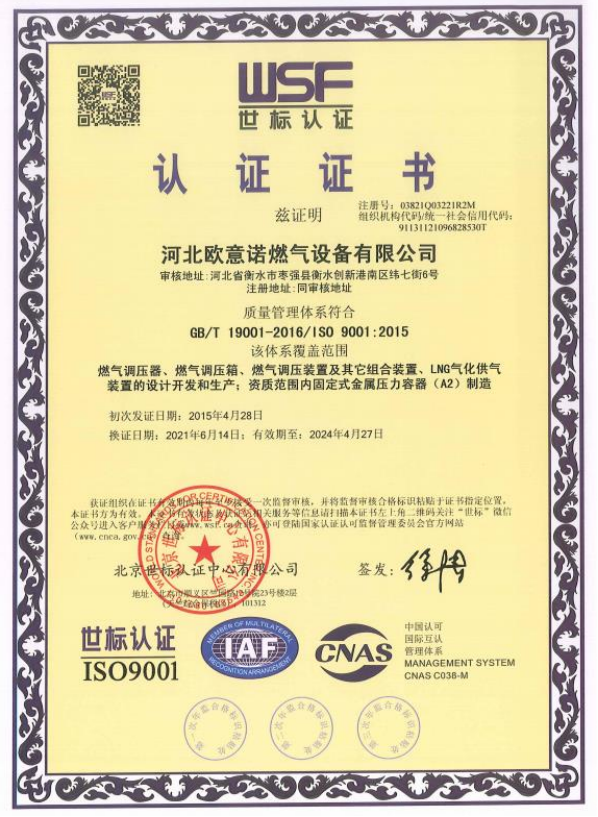
Nov . 18, 2024 03:26
Back to list
صمام تخفيض الضغط
Understanding Pressure Relief Valves A Comprehensive Overview
Pressure relief valves, often abbreviated as PRVs, are critical components in various industrial applications where controlling fluid pressure is vital for safety and operational efficiency. These valves are designed to automatically release excess pressure from a system, ensuring that the pressure does not exceed predetermined limits, thus preventing potential failures or catastrophic incidents.
Function and Importance
The primary function of a pressure relief valve is to maintain the desired pressure within a system. When the pressure exceeds the set limit, the valve opens to allow fluid to escape, thereby reducing the pressure back to a safe level. This process is crucial in numerous sectors, including oil and gas, chemical manufacturing, and water treatment facilities, where unregulated pressure can lead to equipment damage, leaks, or even explosions.
In a typical scenario, a PRV is installed in pipelines, tanks, or vessels that contain gases or liquids under pressure. When operations are running smoothly, the valve remains closed. However, once the internal pressure surpasses the valve's set point, it will open, allowing the excess pressure to be vented safely. This functionality not only safeguards the equipment but also protects personnel and the environment from accidents.
Types of Pressure Relief Valves
There are several types of pressure relief valves, each suited for specific applications and pressure ranges. Some of the most common types include
1. Spring-loaded Valves These are the most widely used PRVs. They rely on a spring mechanism to close the valve when the pressure drops below a certain level. When the pressure exceeds the set point, the spring is compressed, allowing the valve to open.
2. Pilot-operated Valves These valves use a smaller pilot valve to control the larger main valve. They offer higher flow rates and more precise control over pressure settings, making them suitable for high-pressure applications.
.
4. Safety Relief Valves These are specifically designed for safety applications and are often found in boilers and pressure vessels. They provide a fast and reliable way to discharge steam or gases to prevent overpressure conditions.
صمام تخفيض الضغط

Applications
PRVs are utilized across many industries, highlighting their versatility and importance
- Oil and Gas In drilling and production operations, PRVs help manage pressure in pipelines and storage tanks, mitigating risks associated with volatile materials. - Chemical Processing With the potential for hazardous reactions, effective pressure control is vital. PRVs help maintain stability in reactors and containment vessels.
- Water Treatment In water supply systems, pressure relief valves ensure that the pressure remains within safe limits, preventing damage to pipes and infrastructure.
- HVAC Systems In heating and cooling systems, PRVs protect compressors and other components from excessive pressure that can lead to system failures.
Selection and Maintenance
Choosing the right pressure relief valve for a specific application involves considering several factors, including the type of fluid, the pressure range, and the required flow rate. It's essential to ensure that the valve is appropriately sized and rated for the intended use to guarantee safety and functionality.
Regular maintenance of pressure relief valves is critical to ensuring their reliable operation. This includes routine inspections, testing to verify functionality, and replacement of any worn or malfunctioning parts. Failure to maintain these valves can lead to dangerous conditions, making it imperative for operators to establish a maintenance schedule.
Conclusion
In summary, pressure relief valves are indispensable in maintaining safety and operational efficiency in various industrial applications. Their ability to automatically manage excess pressure is crucial in preventing accidents and protecting both personnel and equipment. Understanding the different types of PRVs, their applications, and the necessity for regular maintenance can significantly enhance safety protocols in any pressure-controlled environment. As industries continue to evolve, the ongoing development and refinement of pressure relief valve technology will remain vital in ensuring operational safety and efficiency.
Next:
Latest news
-
Safety Valve Spring-Loaded Design Overpressure ProtectionNewsJul.25,2025
-
Precision Voltage Regulator AC5 Accuracy Grade PerformanceNewsJul.25,2025
-
Natural Gas Pressure Regulating Skid Industrial Pipeline ApplicationsNewsJul.25,2025
-
Natural Gas Filter Stainless Steel Mesh Element DesignNewsJul.25,2025
-
Gas Pressure Regulator Valve Direct-Acting Spring-Loaded DesignNewsJul.25,2025
-
Decompression Equipment Multi-Stage Heat Exchange System DesignNewsJul.25,2025

